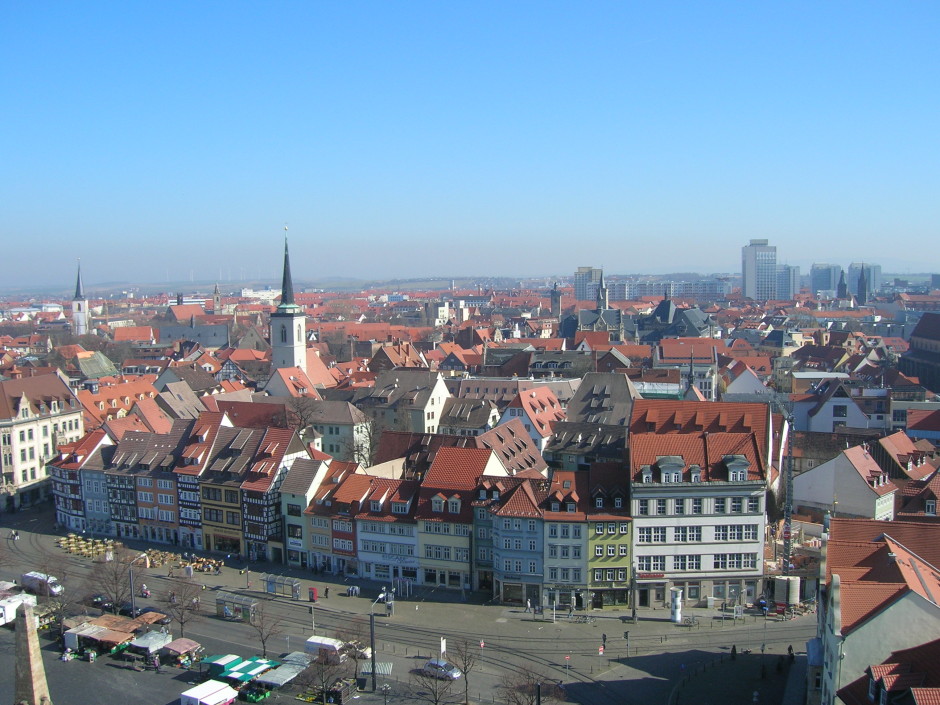The novelist Arnold Zweig succinctly described the old quarter of Erfurt, a city in eastern Germany, as “a picture book of German history.”
It was a fair assessment.
Martin Luther, the theologian whose ideas gave rise to Lutheranism, studied and worked here as a monk in the 16th century. The Kramerbrucke, the longest covered bridge in Europe containing houses and shops, was constructed during Erfurt’s heyday as a hub of medieval European trade routes. The Social Democratic Party, which has played a seminal role in German politics, was founded here in the 19th century. East Germany’s Silicon Valley was located in Erfurt.
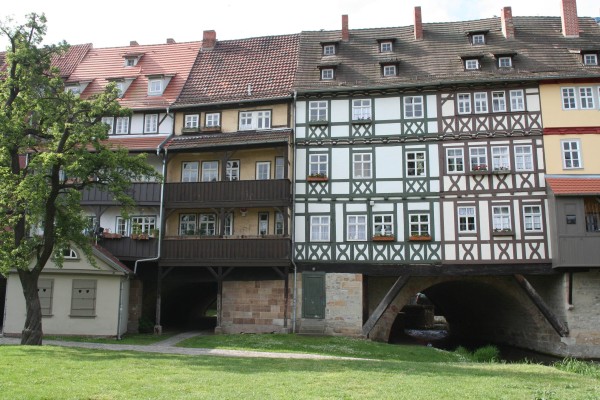
Five years ago, Erfurt added another notch to its pedigree when the oldest synagogue building in Europe was opened to the public.
The Old Synagogue, as it is known, was rediscovered in the late 1980s after art historian Rosita Peterseim began investigating the site upon which it stands. Built in three stages from 1094 onward, it ceased being a synagogue in the wake of a pogrom in 1394.
Touched off by groundless accusations that Jews had poisoned the city’s wells, it resulted in the destruction of Erfurt’s Jewish community.
Sold to a merchant after the departure of its surviving Jewish residents, the synagogue was successively a warehouse, a restaurant, a dance hall and a bowling ally. From the 17th to the 19th century, much of its facade was concealed by new, non-descript buildings.
By the time the Nazis assumed power in 1933, virtually everybody had forgotten the synagogue, except a handful of people like Peterseim and Elmar Altwasser, a historian who would write a book about it.
As a result of Peterseim’s remarkable discovery, the synagogue was bought by the municipality from a private trust fund, and all the drab buildings that had hidden it for centuries were demolished. In short order, the synagogue was painstakingly renovated, a process that required almost a decade, said Ines Beese, the director of the Old Synagogue, now a museum.
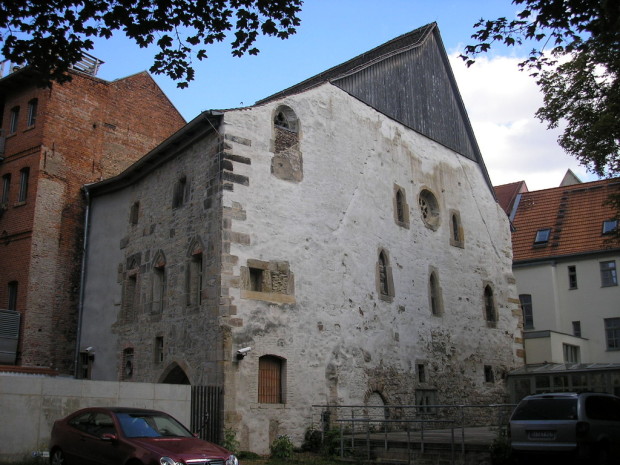
As it was being restored, workers nearby stumbled upon what is now called the Erfurt Treasure, a fabulous 28-kilogram cache of beautifully hand-crafted gold and silver jewelry, pendants, coins, beakers, bowls, cups, button clasps, belt buckles, dress ornaments, ingots and a cosmetic set.
Unaware of its historic significance, the workers butted out their cigarettes in a silver bowl, one of the items that had been excavated, Beese said.
Further investigations revealed that the Erfurt Treasure had belonged to Jewish banker Kalman von Wiehe, who had buried it as the 14th century pogrom raged.
A rare find of its kind from the Middle Ages, the Erfurt Treasure found a permanent home in the Old Synagogue, which opened in 2009.
Today, it’s Erfurt’s top tourist attraction.
Exhibited in glass cases in the basement of the synagogue, the Erfurt Treasure consists of 3,141 coins from France, Holland, Sicily and Frankfurt, 14 silver ingots and hundreds of pieces of Gothic jewelry.

By far the most extraordinary item is an oversized and amazingly intricate Ashkenazi gold wedding ring studded with precious jewels, adorned with a Gothic tower and engraved with six Hebrew letters spelling out mazel tov.
Embedded into a concete wall in the courtyard of the synagogue are fragments from 13th and 14th century tombstones, all engraved with Hebrew lettering.
The gravestones were removed from a Jewish cemetery that was plundered and levelled during the infamous pogrom, which claimed the lives of upward of 900 Jews. The headstones were used for construction purposes.
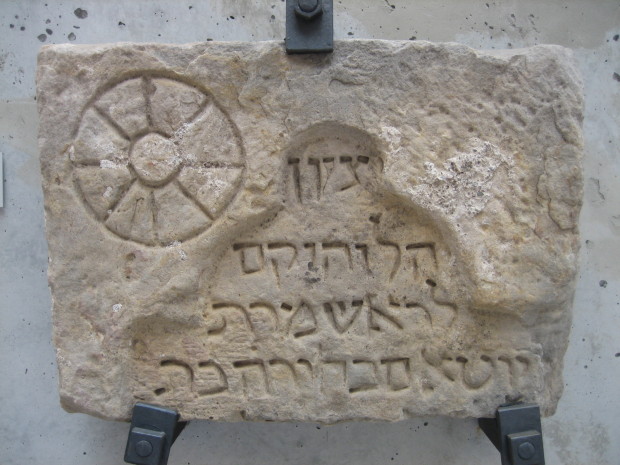
During the 15th century, a wheat storage facility was erected on the grounds of the cemetery. It stands abandoned and forlorn today, but plans are afoot to convert it into a garage.
Within earshot of the synagogue, a 13th century mikvah, or ritual bath, was discovered by archeologists seven years ago. The mikvah was frequented by Jews who were permitted to return to Erfurt five years after the pogrom. After Jews were expelled yet again in 1453, the mikvah was converted into a cellar.
The deeply-entrenched antisemitism that was so common during that era manifests itself in an oak carving in St. Mary’s cathedral, Erfurt’s oldest church. The carving portrays a German knight on a horse facing off against a Jew wearing a typically peaked Jewish hat and sitting on the back of a pig.
Allowed to return to Erfurt in the 19th century, Jews built the ne0-classical Small Synagogue in 1840. A far larger Moorish-style synagogue supplanted it in 1884.
Sold to a merchant, the Small Synagogue was by turns a storage and a residential building. Twenty two years ago, after having been listed as a historic monument, it was converted into a venue for interfaith meetings, lectures, concerts and exhibitions. A permanent exhibit in the basement contains a wealth of Jewish religious articles ranging from yarmulkes to Torah scroll pages.
The Moorish-inspired synagogue met a tragic ending, having been destroyed by the Nazis during Kristallnacht in November 1938.
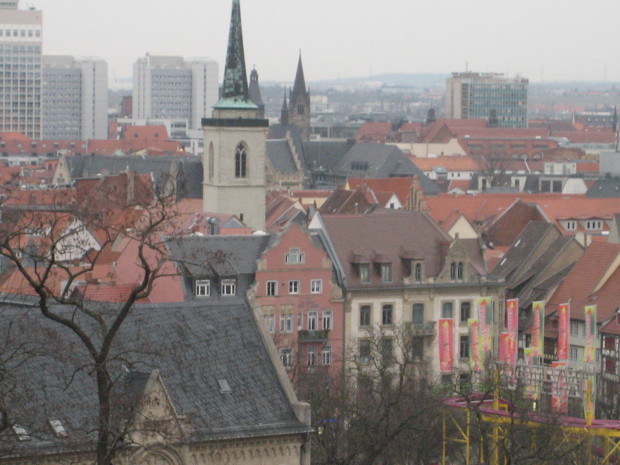
Erfurt’s third surviving synagogue, the New Synagogue, was completed in 1952, and was the only Jewish house of prayer built during the Communist epoch, which ended in 1989. These days, the vast majority of its worshippers are Russian-born Jews, who immigrated to Germany in great numbers in the 1990s.
Erfurt’s pre-World War II Jewish community was largely eradicated by the Nazis by means of forced emigration and mass murder. Orange globes mounted on stainless steel beams throughout Erfurt remind residents of this dark period.
